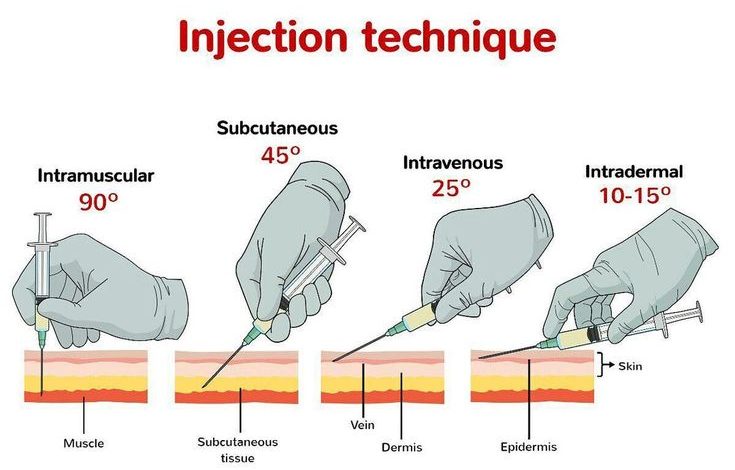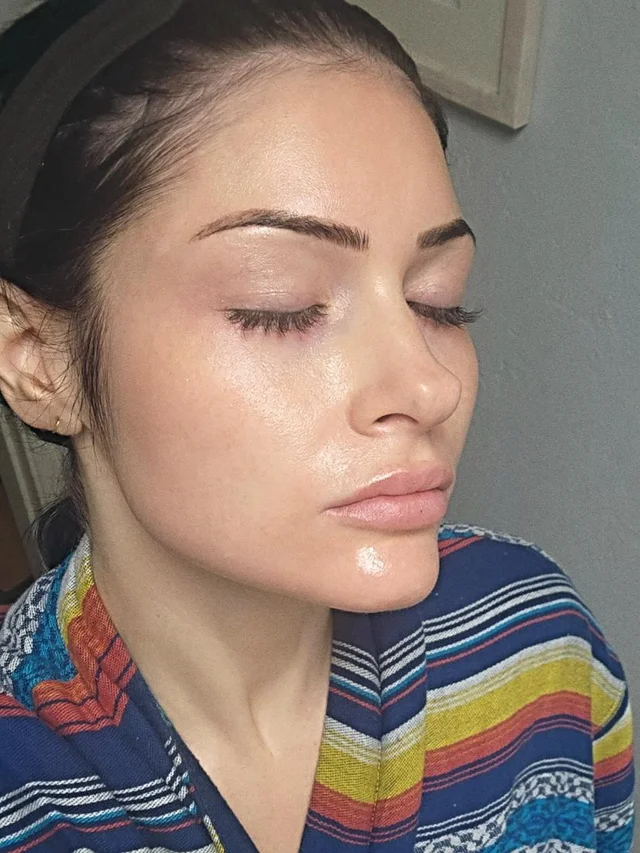What Degree Do You Need To Give Botox Injections?

An injection also referred to as a “shot” is the act of administering a liquid, especially a drug, into a person’s body using a needle (usually a hypodermic needle) and a syringe. An injection is considered a form of parenteral drug administration; it does not involve absorption in the digestive tract.
Giving an injection allows the medication to be absorbed more rapidly and avoid the first pass effect. There are many types of injection, which are generally named after the body tissue the injection is administered into.
The four most frequently used types of injection are:
- Intravenous Injection: The abbreviation of intravenous injection is IV. This route is the fastest way to send medication and deliver fluids directly into a vein. Intravenous (IV) injection or infusion; medication sent directly into the vein using a needle or tube.
- Intramuscular Injection: The abbreviation of intramuscular injection is IM. This route is used for the Injection of a substance into muscle.
- Subcutaneous Injection: The abbreviation for subcutaneous injection is SC. For SC injection, the short needle is used to give medication into the layer between the skin and muscle.
- Intradermal Injection: The abbreviation of Intradermal injection is ID. This route is used to deliver medication into the dermis or the skin layer underneath the epidermis.
What are Botox Injections?
Botox injections are used to soften facial wrinkles, prevent chronic migraines, excessive sweating, cervical dystonia, spasticity, and some eye muscle conditions, and treat urinary leakage caused by an overactive bladder. Botox is made from the bacteria that cause botulism. Manufacturers make Botox injections with very small doses of Botulinum toxin. The drug can temporarily paralyze muscles, which can benefit people with various muscle or nerve disorders.
Commercial preparations of Botulinum toxin include:
- onabotulinumtoxin A (Botox)
- abobotulinumtoxin A (Dysport)
- incobotulinumtoxin A (Xeomin)
- rimabotulinumtoxin B (Myobloc)
- prabotulinumtoxin A (Jeuveau)
People casually use the term “Botox” to describe all of these products, though Botox is a registered trademark that one company owns.

How does it work?
Botox injection is a neurotoxin. These substances target the nervous system, disrupting the nerve signaling processes that stimulate muscle contraction. This is how the drug causes temporary muscle paralysis.
In order for any muscle to contract, the nerves release a chemical messenger called acetylcholine at the junction where nerve endings meet muscle cells. Acetylcholine attaches to receptors on the muscle cells and causes the cells to contract, or shorten.
Botox injections prevent the release of acetylcholine, which stops the muscle cells from contracting. In this way, the toxin helps the muscles to become less stiff.
Why it’s done
Botox injections block certain chemical signals from nerves, mostly signals that cause muscles to contract. The most common use of these injections is to temporarily relax the facial muscles that cause wrinkles in the forehead and around the eyes. Botox injections are also used to treat conditions that affect how the body functions. Examples include:
- Bladder dysfunction. Botox injections can also help reduce urinary incontinence caused by an overactive bladder.
- Cervical dystonia. In this painful condition, your neck muscles contract involuntarily causing your head to twist or turn into an uncomfortable position.
- Chronic migraine. If you experience migraines more than 15 days a month, Botox injections may help reduce headache frequency.
- Eye twitching. Botox injections may help relieve contracture or twitching of muscles around the eye
- Hyperhidrosis. In this condition, excessive sweating occurs even when the temperature isn’t hot and you’re not exerting yourself.
- Lazy eye. The most common cause of lazy eye is an imbalance in the muscles responsible for positioning the eye.
- Muscle contractures. Some neurological conditions, such as cerebral palsy, can cause your limbs to pull in toward your center. In some cases, these contracted muscles can be relaxed with Botox injections.
How to use Botox Vial
Botox injections are given by injection by an experienced health care professional. It is injected into the affected muscles (intramuscularly) when treating eye disorders, muscle stiffness or spasms, and wrinkles. When used to prevent migraines, it is injected into the muscles of the head and neck. It is injected into the skin (intradermally) for the treatment of excessive sweating. For the treatment of drooling or excess saliva, this medication is injected into the salivary glands. When treating an overactive bladder, it is injected into the bladder.
Your dose of Botox injection, the number of injections, the site of injections, and how often you receive the medication will be determined by your condition and your response to therapy. For children, the dose is also based on weight. Most people start to see an effect within a few days to 2 weeks, and the effect usually lasts 3 to 6 months.
What Degree Do You Need To Give Botox Injections
The degree you need to give Botox injections depends on the condition you are managing. When administering Botox injections intramuscularly, overwhelming evidence supports a 90-degree angle of needle insertion for Botox injection as being the most effective in terms of patient comfort, safety, and efficacy of the medication.
When injected intradermally to prevent migraines, it is injected at between 5 to 15 degrees. When treating overactive bladder and urgency incontinence, including urgency incontinence associated with neurological disease, it is injected into the bladder.
Although Botox injections are ideally administered directly into the desired muscle as an IM injection, it is often administered as a subcutaneous facial injection in the tissue overlying the target muscle, and diffusion of the neurotoxin into the underlying muscle produces the desired effect. Subcutaneous injections are usually given at a 45- to a 90-degree angle.
Are there any Botox side effects?
Side effects from botulinum toxin injections vary depending on the area receiving treatment. Most issues are mild and improve in a day or two. Possible Botox side effects include:
- Eye irritation or redness.
- Flu-like symptoms.
- Headache.
- Neck pain.
- Pain, swelling, redness, or bruising at the treatment site.
- Temporary drooping eyelids (ptosis).
- Upset stomach (indigestion).
Who should not get Botox injections?
Botox injections are relatively safe. Still, you shouldn’t get this treatment if you’re pregnant, breastfeeding, or have:
- Drooping eyelids (ptosis).
- Neuromuscular disease.
- Weak facial muscles.





